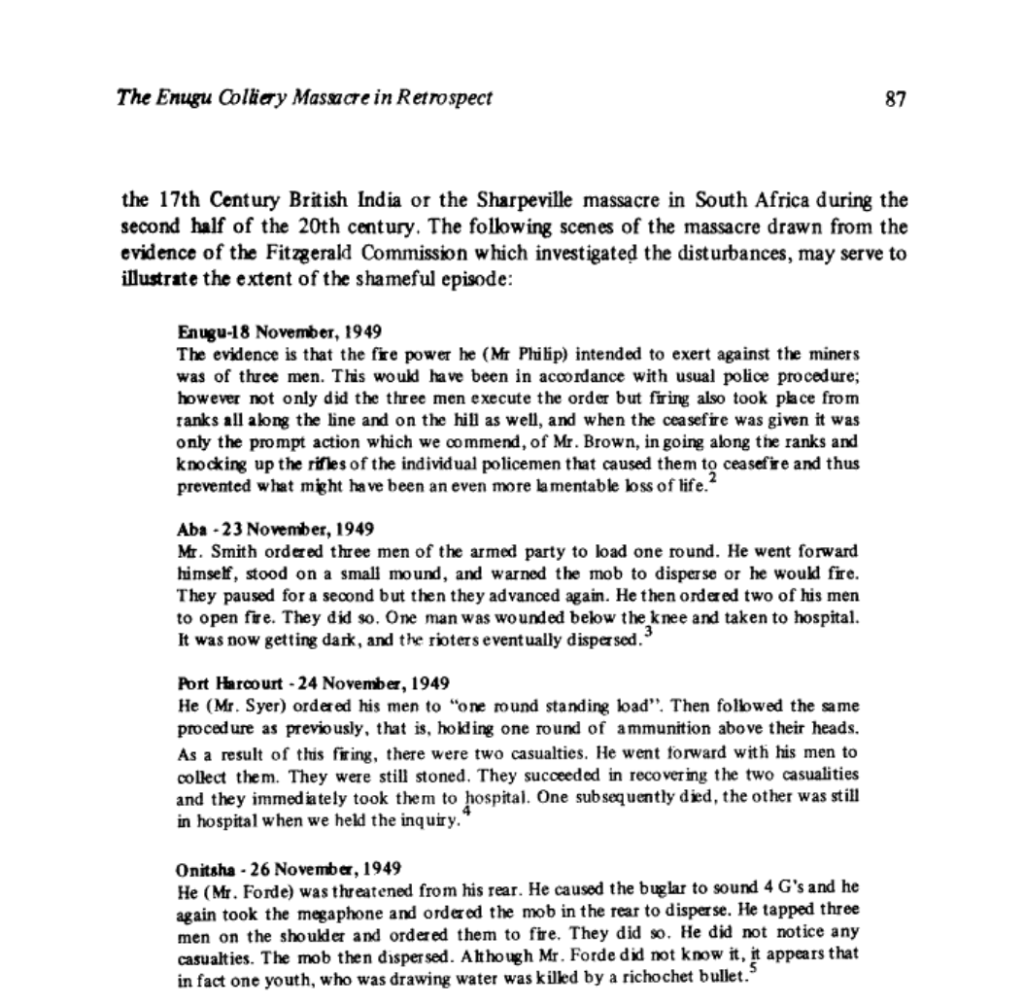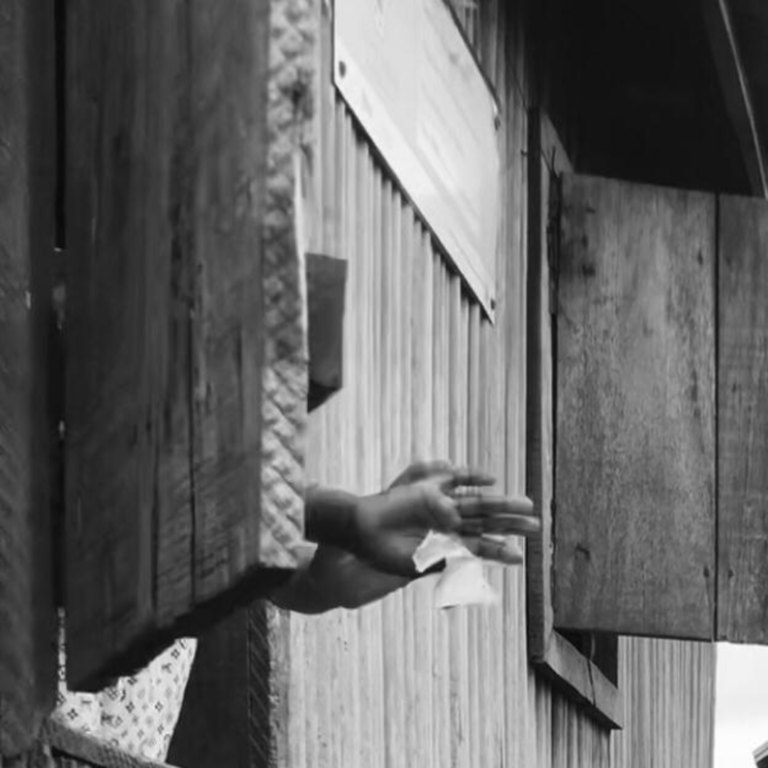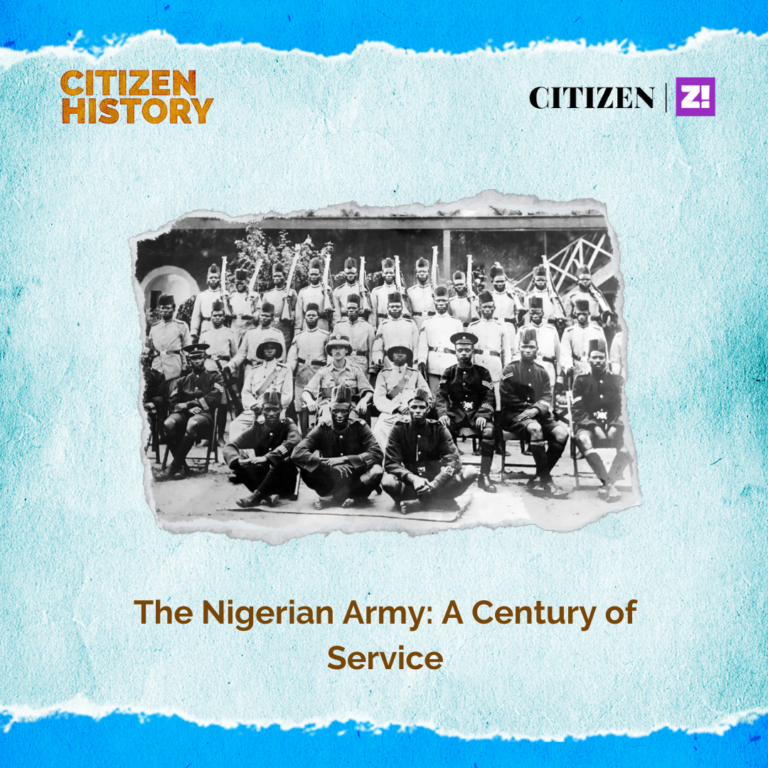Every Nigerian is familiar with the term “go slow”, whether you live in go-slow hubs like Lagos or places with lesser go-slows.
For Nigerians today, go-slow means traffic congestion.
But have you ever wondered how that name come to be? We do, and here is your answer to this week’s episode of Citizen History.

Traffic congestion [Guardian Nigeria]
It’s a sad tale of maltreatment by the British government, fierce resistance, and a massacre.
The Story of the Iva Valley Massacre
Enugu State in eastern Nigeria is known as the Coal City because of the massive coal deposit in the capital Enugu City.

Coal, often used as fuel for locomotive engines, was valuable in pre-colonial Nigeria due to Nigeria Railway Corporation’s high coal consumption.
In 1915, the British colonial government opened the Udi Mine after discovering coal in Ngwo at the top of Milliken Hill. However, it closed two years later and was replaced with the Iva Valley mines in 1917.
Poor welfare of workers
In the 1940s, there was a persistent issue of poor workers’ welfare for people working with the colonial government in Nigeria. A series of protests occurred, leading to a nationwide strike in 1945.

The 1945 general strike in Nigeria [Alamy]
With that, the importance of trade associations to improve working conditions, pay etc., grew with the formation of the Trade Union Congress of Nigeria in 1942. Workers knew they could bring about change if they dared to stand up together.
However, the trade unions established around that time had internal beef, allowing their Opp, the colonial government, to be one step ahead.

Excerpt from “THE ENUGU COLLIERY MASSACRE IN RETROSPECT: AN EPISODE IN BRITISH ADMINISTRATION OF NIGERIA” by S. O. Jaja
By 1949, Enugu was already a cosmopolitan town with about 25,000 inhabitants and approximately 8,000 employed coal miners.
But the growing production did not reflect the life of an average miner, who worked underground six days a week with poor oxygen. The pay was also minimal, as they experienced pay cuts and inflation due to the economic recession led by World War 2.
The colonial government also weaponised tribalism by making indigenes of the Ngwo community where the mine was located work as coal miners while non-indigenes worked above ground and did more clerical duties.
Taking a leaf from the growth of trade unions in Nigeria, two unions came together to form the Colliery Workers Union (CWU), and their leader was the charismatic Isaiah Okwudili Ojiyi, a former schoolteacher.
On November 1, 1949, the CWU demanded better pay for all workers, improved working conditions, upgrading the mine hewers to artisans, and the payment of housing and travelling allowances. Naturally, the capitalist colonial government rejected their demands and doubled down on intimidation, assault, and promoting infighting.
The Go Slow strike

The workers at Iva Valley [Pulse Nigeria]
In 1941, the colonial government created Nigeria General Defense Regulations (NGDR), which banned workers from going on strike.
Therefore, the 1949 protesters had to be smart; otherwise, the miners would be fired altogether.
So they devised an industrial action called the “Go-Slow”.
The workers would not lay down tools but work very slowly, affecting production. A handful of coal was being produced daily instead of wagon loads. But as they were “working”, they couldn’t be punished by the angry government.
Reluctantly, the colonial government started a negotiation and reached an agreement but also breached it when it sacked more than 200 miners between November 10 and 12, 1949.
The Go-slow method escalated to a stay-in strike in which the workers came to the mine but did no work. This also prevented the colliery managers from simply replacing the protesting miners this time.
It was then decided that the police would remove the protesting miners. To justify this, they claimed that a set of explosives used for work in the mine had gone missing.
The Police were there to remove the bomb.
The Massacre
On November 18, 1949, 50 armed riot police officers arrived at Iva Valley led by a Senior Superintendent of Police, F.S Philips.

Superintendent F.S Phillips [BBC/Getty Images]
The miners had tied strips of red cloth to their helmets as a mark of protest and as was their custom. They faced the armed police and began to dance and chant to boost morale.

Philips decided that the miners looked menacing, “indulging in a war dance,” and started shooting.
Twenty-one miners were killed, and many of them were shot in the back.

The Aftermath
The tragedy spread across places like Aba, Port Harcourt, Onitsha and even London, resulting in mass protests.

Nigerians at a rally in Trafalgar Square over the Iva Valley Massacre [Asiri Magazine]
Eighteen prominent Nigerians created the National Emergency Committee (NEC) to coordinate a national response to this atrocity against humanity.

The Iva Valley protest and massacre contributed to nationalist movements in Nigeria. It also helped in restructuring the trade unions, and the creation of a Nigeria Colliery Commission handled by Nigerians.
The method of the go-slow strike was also seen as revolutionary and was exported to the UK as a form of industrial strike.
Think about this the next time you find yourself in a “go slow”.




